Loki Laufeyson, or God of Mischief, is the Marvel Cinematic Universe’s (MCU) ultimate wild card, and Tom Hiddleston has been rocking that role since 2011. Loki started out as a classic, power-thirsty bad guy, but he is way more complicated than that now. He has swagger, is a little bit broken, and is probably the reason half the MCU’s plot twists even happened.
The MCU just wouldn’t hit the same without his chaotic energy stirring up trouble and occasionally saving the day, because Loki has got to keep us guessing.
Loki shows up in the world as a tiny Frost Giant kid — King Laufey’s own son, but way too scrawny for Jotunheim standards, so Laufey just dumps him. Then Odin rolls in after the Asgard vs. Frost Giant war, finds baby Loki, and raises him as an Asgardian prince. Maybe Odin just wanted to play peacemaker, or maybe he saw something in the kid. Either way, Odin raises him as his own, alongside Thor.
Fast forward a bit, and Loki is trying to figure out where he belongs. He is not really Asgardian, not really Frost Giant. Plus, he is living in Thor’s shadow all the time. So he is stuck with jealousy, loneliness, and also, weirdly, love for Thor.
Loki has mystical abilities, including shapeshifting, mind-bending illusions, telepathy, and teleporting. Also, he can mess with molecules. And don’t forget he is built like a demigod thanks to his Asgardian roots. The real danger, however, isn’t just his magic — it is his brain. Loki is clever, always scheming, always five steps ahead.
Loki crashed onto the scene in Thor (2011) and instantly stole the spotlight. He finds out he is actually a Frost Giant, and that identity crisis kicked off the main beef in the movie. And his whole “evil prince” routine didn’t just fizzle out. He rolled straight into The Avengers (2012) as the big bad, dragging all the heroes together for the first time.
Loki’s story is a total rollercoaster. He goes from anti-hero in Thor: The Dark World to buddying up with Thor in Thor: Ragnarok. All this culminates in a redemptive sacrifice during Avengers: Infinity War.
You would think getting offed by Thanos would be the end, but thanks to Endgame’s time-travel shenanigans, we get a whole new Loki. He then goes on to star in the Loki series.
When Loki dropped on Disney+ back in June 2021, a few saw it turning into the backbone of Marvel’s whole cinematic universe. Kevin Feige, the Marvel boss, was himself hyping it up before it even aired, saying it might shake up the MCU more than anything before.
First off, Loki is the first show that really digs into all the chaos from Endgame’s time heist. It references that timeline messsuch as the TVA, “variants” running around, and Sacred Timeline that is apparently hanging by a thread. Loki even kicked the door wide open for all that multiverse you saw in Doctor Strange: Multiverse of Madness or Spider-Man: No Way Home.
The following eight moments are not just “big deals” for Loki himself, they sent shockwaves through the whole Marvel universe. Half the stuff happening now owes itself to all the mess that he started.
Loki’s arrest and introduction to the TVA (Season 1, Episode 1)
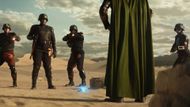
The show kicks off with a scene from 2012 where Loki grabs the Tesseract and nopes out of there during the Avengers’ time-travel heist. Next thing you know, he is snatched up by the TVA. These guys claim to keep the “Sacred Timeline” in check.
Mobius (Owen Wilson) sits Loki down for a reality check. He runs the God of Mischief through his greatest hits — and future hits — on the Sacred Timeline. Loki gets to see not just where he has been, but where he is supposed to go, and it is not exactly a happy ending.
The wildest bit is that Loki realizes the Infinity Stones are just paperweights here. The message is loud and clear: Nothing he did or thought was important, really mattered in the grand scheme. And that’s the point.
Loki takes this idea of cosmic order and makes it feel personal. Now, it is the foundation for every multiverse shenanigan Marvel plans to throw at us next.
They are teasing alternate realities, and every future Marvel project that has to do with timelines or realities. This is where the groundwork gets laid.
Seeing his death and the Sacred Timeline (Season 1, Episode 1)
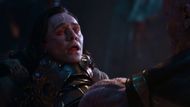
Loki watching his own greatest hits — if you can call watching your own death a “hit” — is just brutal. Mobius sits him down with a cosmic highlight reel: dead mom, dead dad, a bunch of heartbreak, and then Thanos snaps his neck.
Sure, it is character development, but it is also a meta-commentary on fate vs. free will. It becomes the backbone for everything Marvel cranks out in Phase 4 and on. Plus, it is the real kick that nudges Loki to break out of his villain rut. He finally stops running on his own narcissism hamster wheel, and you have a multiverse where maybe people actually get to choose their path instead of getting railroaded by destiny.
These themes of mortality and purpose are what give the next batch of movies some teeth. It ties all these realities together so the multiverse isn’t just an excuse for more cameos. It is actually where the real drama and character shakeups happen.
The revelation and betrayal of the Time Keepers (Season 1, Episode 4)
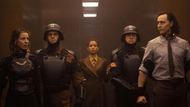
So, Loki and Sylvie bust into the Time Keepers’ lair, only to find out these so-called cosmic overlords are just a bunch of robo-decoys. The real puppet master is still lurking in the shadows.
Anyway, the TVA’s whole act crumbles, and Marvel’s entire universe feels wobbly. If the reality cops are fakes, who is actually pulling the strings? Nobody really knows, and that uncertainty is a total game-changer.
It is the fuel that sets up Doctor Strange in the Multiverse of Madness and the rest of Marvel’s reality-bending chaos. It is a whole new thing where nobody is sure who is running the show or what is even real anymore.
r All Time. Always.” - Meeting He Who Remains (Season 1, Episode 6)
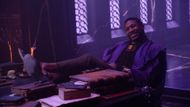
Loki and Sylvie meeting He Who Remains is the power move of the whole show. Jonathan Majors just eats the screen alive as this guy is not just pulling strings, but literally holding the entire Sacred Timeline together. The warning he drops is chilling: Take him out and you’re not just lighting a fuse, you’re blowing the whole multiverse to smithereens.
Apparently, it will unleash infinite versions of himself, some far more dangerous.
Then Sylvie goes and actually kills him. Now, the multiverse is busted wide open, and Marvel’s entire next phase is riding this chaos. That split-second decision is the domino that knocks over Ant-Man and The Wasp: Quantumania, brings Kang the Conqueror onto the main stage, and pretty much sets the table for every Avengers flick and multiverse story Marvel’s got cooking.
The Loki-Sylvie nexus event on Lamentis-1 (Season 1, Episode 4)
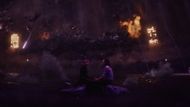
Loki and his variant, Sylvie, sit together awaiting apocalyptic destruction on Lamentis-1, and they are catching feelings. It’s like Loki meets Loki, falls for Loki, and the universe just can’t handle that level of self-obsession. The result is a Nexus Event, even though death is knocking at the door.
It is the first time Marvel actually shown us what a Nexus Event looks like when it goes nuclear. And if you have seen No Way Home or Multiverse of Madness, you know this stuff is the backbone of all that multiverse chaos.
The battle of the Loki variants in the void (Season 1, Episode 5)
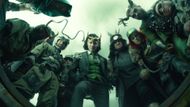
Loki gets chucked into The Void at the End of Time, and he is knee-deep in a mess of other Lokis. You have Kid Loki, Classic Loki (cape and all), Boastful Loki, and an actual Alligator Loki. There is backstabbing, bickering, and some surprisingly emotional moments. It is also kind of hilarious, but underneath all the absurdity there is something sad about it. No matter the timeline, Loki just can’t catch a break.
This whole parade of Lokis cracked open the door for Marvel’s multiverse shenanigans. Suddenly, you have all these different versions of characters popping up, like in Spider-Man: No Way Home and Doctor Strange in the Multiverse of Madness. Marvel just cranked open the door for all sorts of crossovers and blasts from the past. The whole approach to keeping stories and characters consistent is out the window.
Loki’s choice to confront Authority instead of destroy it (Season 2, finale)
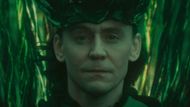
Loki has a big moment in Season 2. He picks the most exhausting job ever — gluing the multiverse together. Not for glory, not for kicks, but because someone has to do it.
What actually makes it hit different is that he is not power-tripping this time. You can see all those classic superhero vibes, but Loki is extra lonely. The guy is out there solo, juggling timelines.
This move takes the MCU’s one-guy-in-charge thing and throws it out the window. Feels like Marvel’s hinting at way more interesting stories going forward. And you bet that will change how the next movies tackle the who’s-responsible-for-what question.
The spreading Multiversal War and the Rise of Kang (Season 2, throughout)
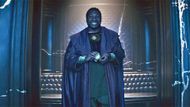
Both seasons kick off a chain reaction. You have Sylvie doing her thing, Loki making his mess, the Sacred Timeline is in shambles, and there are a bazillion timelines out there. Some get stuck with a “nice” Kang, while others draw the short straw and get the full-blown evil version. Kang’s rise is the looming and real fuel behind Avengers: The Kang Dynasty and whatever else Marvel is cooking up next.
The idea of a whole crowd of Kangs running around is both hype and kind of terrifying. So, get ready for reality-smashing showdowns and pure chaos.
